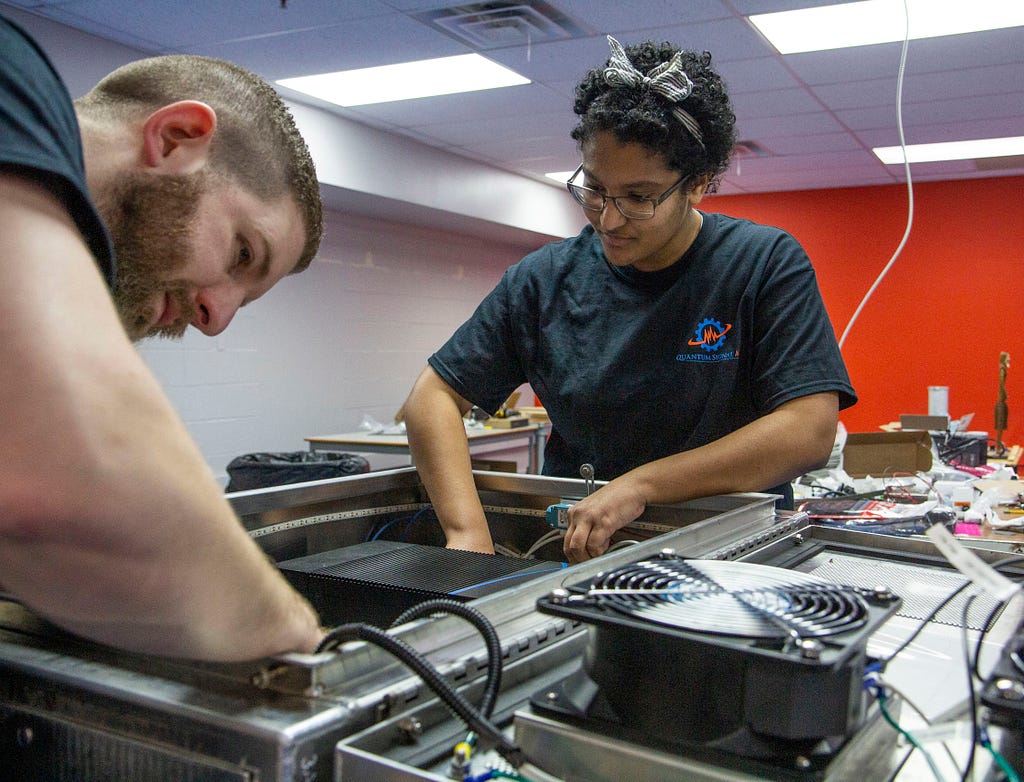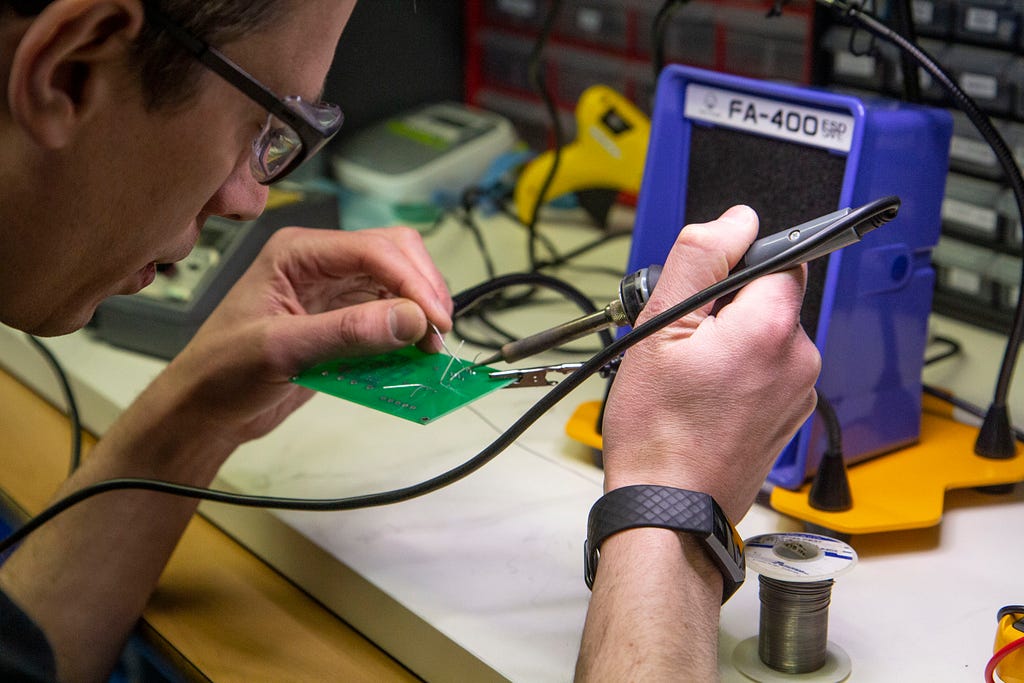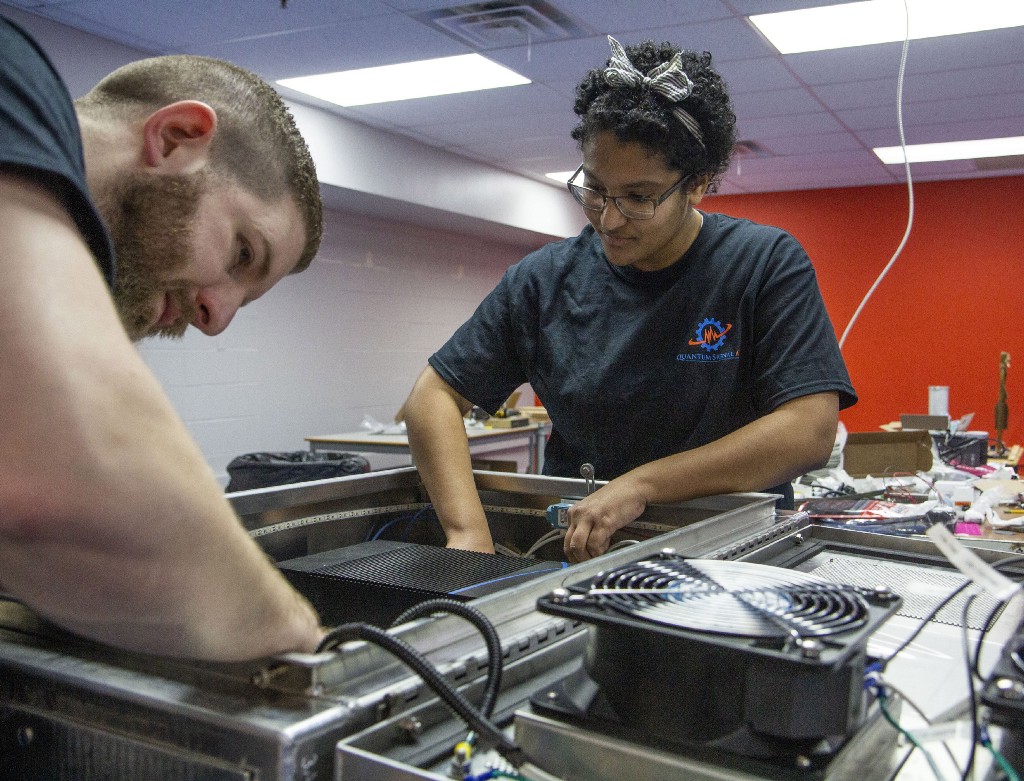By Mitchell Rohde, CEO and Co-Founder, Quantum Signal AI, LLC

As the auto industry evolves, so does the important role mathematics plays in driving the changes it is experiencing. Advancements in sensing and perception, control, communications and other key areas have created an increased need for talent specializing in software and engineering.
Quantum Signal AI has witnessed the growing need for math-based engineers firsthand. A diverse and funky team featuring highly specialized experts in algorithm development, hardware systems and robotics, we are in the midst of doubling our technical group to support Ford’s plan to launch a self-driving service.
Since being acquired by Ford Autonomous Vehicles LLC last summer, Quantum Signal AI has been quickly integrated into several parts of Ford’s self-driving efforts. Here are a few key ways we’re supporting Ford:
Simulate my ride experience
People often ask me why simulation is so important when it comes to developing self-driving cars and, more generally, mobile robotics. While there’s no doubt running tests and working in the physical world is important, simulation offers the ability to explore systemic performance in ways that would be very expensive in terms of both time and resources, or virtually impossible in real-world testing.
With well-developed simulations, we can place virtual vehicles in virtual environments, attach virtual sensors, add virtual instrumentation and perform a wide array of scenario-based testing millions of times — giving us insight into how robust our vehicles and experiences are much more efficiently and effectively than we’d be able to discover otherwise. In many ways, it’s simply not feasible to launch self-driving cars in the near future without leveraging simulations to test a whole host of things.

By using both physical and digital tests, we can greatly increase our ability to fine-tune self-driving cars. Quantum Signal AI was a leading proponent and developer of autonomous vehicle simulation tools and approaches for the U.S. Army, and brings to Ford almost two decades of experience to bear on the next-generation challenges Ford is addressing!
As a part of Ford, we’re already using simulation to address several issues around customer experience, including what it feels like to actually be inside one of these cars. While Argo AI leads development of the self-driving system (SDS), we are working closely with Ford to explore how that system is going to interact with the vehicle platform and the passengers within it. Collaborating with Ford vehicle dynamics experts, we’re building simulations that analyze the ride quality customers will get when traveling in our vehicles, with the goal of ensuring smooth and enjoyable journeys every time someone gets inside.
Offering a little perspective
Another way we’re using simulation to improve the customer experience is by thinking through how to build confidence in your ride. Even when you’re traveling as a passenger in a friend’s car, it’s not a great feeling when the driver takes a turn you aren’t expecting. So how do we convey to customers what a self-driving car is actually doing in a way that helps them trust the vehicle is operating in a safe manner? It’s a non-trivial problem, indeed!
One potential solution is to actually show them what the vehicle is doing through an onboard situational awareness screen. Using simulation, we can quickly explore numerous ways to visualize the information coming from a vehicle’s sensors and help Ford’s team design user interfaces that easily communicate what’s happening at any point during a ride. We can show customers a vehicle’s current trajectory as it drives through the street, as well as upcoming traffic lights, pedestrians and other vehicles on the road. After all, if you know a self-driving vehicle can see a pedestrian crossing up ahead, and are aware it is slowing down to soon make a right turn, you’re much more likely to be comfortable as a passenger along for the ride. Makes sense, right?
Whether we’re talking about building simulation tech or improving ride quality, viable autonomous solutions are increasingly being built on a foundation of robust software, hardware and algorithms. It’s a major reason why Quantum Signal AI is expanding so rapidly — and why math-powered engineering will be a key part of Ford’s equation for shaping the future of transportation once again.
How Algorithm and Simulation Work Is Helping Ford’s Autonomous Vehicle Operations was originally published in Self-Driven on Medium, where people are continuing the conversation by highlighting and responding to this story.
